When it comes to young Bordeaux, the market has soured, but when it comes to mature Bordeaux, everything is still sweet. While young in the market means 2005 and younger, young for the seasoned Bordeaux drinker might be considered to be 1982 and younger. 1982 is that borderline vintage between young and mature; it is a vintage just starting to show its skin, so to speak. As the ’82s blossom into the ’61s of ten and fifteen years ago, they look more and more undervalued in the market, actually. Given the prices of Bordeaux over the past decade, everything 1982 and older looks extremely reasonable, and these are the wines that show beautiful maturity. I just had a 1979 Margaux recently in Sao Paulo, and it was so delicious, and it is so cheap, cheaper than 2014. How does that work again?
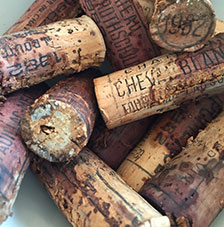
Cork Salad
Recent trips to Europe and Nantucket saw me drinking lots of Bordeaux, and significant selections from two of its most righteous vintages, 1982 and 1945. There is no doubting the greatness of 1945, arguably the greatest vintage of the 20th century. There should be no doubting the greatness of 1982, either. I think there is still some Parker envy relating to 1982, since this was the vintage that made him a star, and so many still can’t accept it. Anyway, consider me a 1982 lover, I even had kids with one 😉
We began a beautiful retrospective of 1982s at the amazingly great Nantucket Wine Festival with a sumptuous 1982 Montrose. It had a gorgeous nose that was nutty, honeyed, sweet and balanced with great caramel qualities. Its palate was long, smooth and lingered right up to the border of outstanding. A pinch of herbs rounded out this delicious and classy Montrose (94).
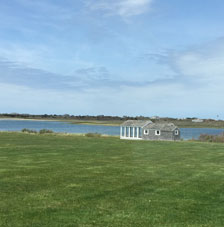
Room with a View: Nantucket
A 1982 Cos d’Estournel was unfortunately corked, which was a shame since this can compete with the best of the vintage (DQ).
The 1982 Grand Puy Lacoste immediately showed how good Pauillac is in this magical vintage. Its nose was rich, buttery and heavy with blacker walnut, slate and nutty aromas. Garden and fresh herbs added complexity to this rock solid wine. There were more tannins here on its rich palate, which had great minerality on its finish. This was still young (95+).
The 1982 Leoville Poyferre was smooth and pretty. It was softer and the most mature of all the 1982s, but that was ok. It tasted like it had a higher Merlot concentration, but it also possessed great caramel and cedar flavors. Though more mature, it was quite tasty and not declining by any stretch of the imagination (93).
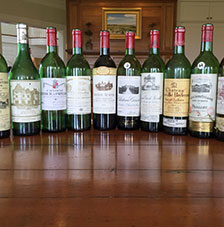
1982s Happy Together
I expected the 1982 Leoville Las Cases to be one of the wines of the day, but this bottle needed more time. It was a bit oakier at first, lengthy yet smooth. Its tannins had flesh, and its fruit morphed into delicious, but in a more violet and herbal way. It ‘acted like a shock absorber’ per Omar, and we both sensed more Cabernet Franc here than anything else. I will say I have had better bottles, not that this one was off (94).
We changed gears to St. Emilion and a 1982 Canon. This had a great nose, with that St, Emilion/Cab Franc thing happening, again with violets but also with great musk. The wine was round and tasty with nice stones, herbs and purple kink. It, too, was on the border of outstanding, but it just made it across. A real pleaser, especially given the price in the market (95).
The 1982 Ausone came from the dark era of Ausone, that mid-60s to mid-80s era when the wine simply was not great like before and after. This was much mintier and wintier, so to speak. Red fruits gave way to Christmas trees and pudding. At first, it was softer, easier and tender, but it put on weight with time in the glass and with food. It fattened up and out (93).
The 1982 Cheval Blanc was more reserved. It was dustier and lighter than expected, as the Canon stole the show. There was great intrigue and subtlety to its aromatics. This, too, was smooth and long, and it continued to improve and flex more and more. Omar hailed Cheval as the ‘one-third wine.’ It is right next to Pomerol, its gravelly soil is reminiscent of Graves, yet it is St. Emilion, of course. Ultimately, I gave it the same score as the Canon, but the Canon was more enjoyable today (95).
The 1982 Haut Brion was delicious but advanced. It had an intoxicating, sweet nose that reminded me of the ’45 Mouton I had the night prior, but I will get to that more later. Its minty, sweet, brown sugary nose was very inviting, but it was more advanced and more mature than every other wine so far. It was still so good, but it was more ’45 than ’82. I guess that’s a compliment. If it was really a 1945, I probably would have given it a point or two higher, which sounds like the definition of pedigree (95A).
The 1982 La Mission Haut Brion was a spectacular bottle, probably the best one of this that I have ever had. It was young and tight, full of black fruits. There was a flash of sweetness, but this was a taut, stacked wines. Flavors of charcoal, gravel, chocolate and nuts blended together like a ’60s quartet of rhythm, blues and soul. Shit, that’s a trio (98).
The 1982 Mouton Rothschild was much tighter in the nose, but more open on the palate. There were hints of BBQ, cassis, green fruit and honey. Rich, buttery and raw potential oozed into my mouth. This was the most open and giving ’82 Mouton that I have ever had. The fruit had more layers than government red tape, and it went fifteen levels below ground zero, making it (98+).
I had the good fortune of participating in another tasting two weeks prior in a different continent, the one called Europe. There was a trio of 1982s amongst many other wines one evening in Switzerland, beginning with a 1982 Lafite Rothschild. Spice, cedar, cinnamon and pencil all gave those signature Lafite impressions. It felt a little lighter after the food, and it lacked ripeness, but it was still pretty. This was more elegant and beautifully balanced (95).
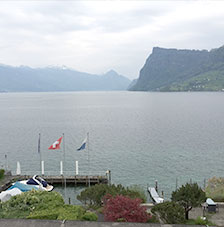
Room with a View: Switzerland
The 1982 Latour is usually, but not always, the wine of the vintage. On this night, everything was normal. The Latour had a much deeper nose with loads more fruit and a touch of chocolate. It was a big, ripe wine that could only be Latour. This had the biggest and loudest volume of all the ’82s, and it was even more than outstanding (98+).
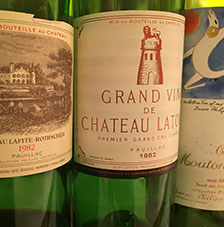
1982 Pauillac Studs
This bottle of 1982 Mouton Rothschild wasn’t as ripe as the one in Nantucket. It was more pointed, a touch leaner, with leather, cedar and a nice, long finish. There was more fruit in the mouth and on the finish, and it kept getting better. This was big and polished (97).
We interrupt these 1982 tastings to bring you a quartet of Chateau Latours, brought directly from the Chateau, as a supplement to this European evening. Suffice it to say, they soon became the main attraction! We began with a 1947 Latour, which had a nice nose with lots of cedar, walnut, wheat, stones and black fruit. There was this lightly herbal edge and a bit of volatile acidity to its palate, which possessed a lot of old book flavors. The wines were served blind, and at first I thought this was the 1950, as the palate was a bit lighter than the average Latour. However, it kept putting on weight in the glass and got quite rich. It possessed the most sweetness of the flight, with chocolate taking center stage. Its finish was very chalky and dusty, and this wine was just a step away from being truly great (94).
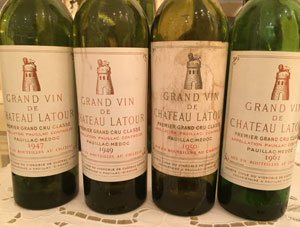
Great Old Latours
The second wine of this blind flight was a touch weird at first, possessing banana peel and coffee grinds in its nose. A touch of cinnamon freshened up the back alley action that was trying to work itself out. The palate of this 1949 Latour was quite pleasant, solid but again a step short of greatness. Frederic found it ‘a little mushroomy.’ We later found out that the ’49 and ’50 that followed were both recorked in 1992 or 1993, although Latour doesn’t indicate that on the cork. On average, they sacrifice one bottle for every two cases when they recondition (94).
The 1950 Latour had a thicker finish with a strong grip. It was drier with more desert qualities and a leathery personality. Its nose had great spice and earth aromas, along with black tobacco. Its palate was big, rich and chocolaty, but with a little air, it came back down to Earth. Initially, it was my favorite, but it got leaner in the glass, a touch too quickly (93).
The crowd was pretty much equally divided as to its favorite of the first three wines, but there was no denying that the 1961 Latour was the wine of the night. There was a similar fruit profile here to the previous Latours, in a much younger and more virile way. This was much deeper, and much more serious. There was a lot of intensity here, and the ’61 Latour had all the right moves and all the right curves to move in the first place. My notes read, ‘I’m yours.’ Not sure if I meant the wine said that to me, or I said that to the wine. Either way, it was on. ‘Raw’ and ‘chocolate’ came from the crowd, and Frederic admired its ‘noble herbal energy.’ There was great minerality and outta control spice to this increasingly complex wine. Flavors of tightly-wrapped nuts in cassis lingered seemingly forever. By the way, there are 25 Imperials left of this vintage at the Chateau. Damn (99).
Speaking of damn, one of the great tastings of the year was in Nantucket, where Mr. Nantucket himself hosted an evening of 1945s at his home. This was part of the Nantucket Wine Festival, a highly recommended wine extravaganza held every mid-May. It’s even better when you attend the Acker Merrall VIP Experience, of which both the ’82 and ’45 tastings were part.
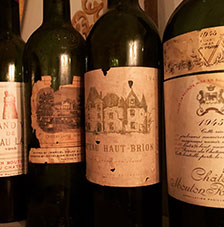
The Greatest Vintage of All-Time
The 1945 Cos d’Estournel set the evening on the right course with a fabulous nose full of smoke, cedar, charcoal and nut. This was a clean and smooth wine. Its palate was satiny, balanced and creamy. While delicate, it was still charming, with delectable cherry flavors and a nice, dry finish. The Fink found it ‘more interesting’ than some of the warmups (94).
The 1945 Palmer had a deep, dirty nose, but in a good way. It was nutty and deep with a chocolaty, beef satay edge. Its palate was full, lush and heavy, and we were certainly in outstanding territory. The muscular style of 1945 flexed here in this big, rich wine. It kept getting better (96).
Cheval Blanc was the only Right Banker on this evening, and it didn’t disappoint with its red, wintergreen and forest fruits. It needed a little more time to open up and shake some metallic edges out, but the earth came out eventually. The animal, the mineral and the vegetable were all there. This bottle of 1945 Cheval Blanc stayed fresh, and its acid really stood out. This had some gorgeous t ‘n a, worthy of Instagram. Yes, I’m hooked, find me @john.kapon . That’s where you get the real time wines being tasted, but still far from all lol (95).
The 1945 Lafite Rothschild had a touch of VA in the nose that blew off with time. Aromas of ramps and leafy greens gave way to caramel and cedar. Its palate was fleshy, and that initial touch of madeira blew off into a solid and delicious wine, but not one of the vintage’s elite (94).
The 1945 Chateau Margaux had a mmm mmm great nose that was smoky, elegant and smooth. It had this ‘good cardboard’ to it, like a new Chanel box for women. Its palate was simpler and easy, a bit woodsy yet pleasantly full-bodied (93).
Unfortunately, two of the greatest wines of the vintage, Latour and Haut Brion, were oxidized bottles. It happens. When you play in the big leagues of great, old wines, there will be losses, but the wins will outnumber them in the end. The bottle of 1945 Mouton Rothschild that followed was so good, it made up for a hundred bad bottles. It had that signature mint and eucalyptus that has made this wine legendary, akin to 1974 Heitz Martha’s. There was meaty, chewy fruit that had just the right amount of sweetness with its caramel, cassis and mixed nut flavors. It had an endless finish, caressing every inch of my mouth all the way down to my soul. This was both mature and youthful, a middle-aged wine in great shape, so to speak. It wouldn’t surprise me if this wine had another 70 years left in it (99+).
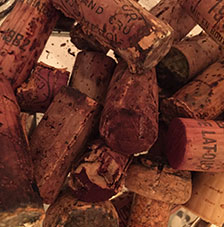
Cork Salad 2
Young Bordeaux may be out of fashion, but if anyone need to be reminded of the greatness of Bordeaux, pop open a 1982, or even better a 1945. There is no denying the great pleasure these great vintages and wines give when of a certain age.
In Vino Veritas,
JK
